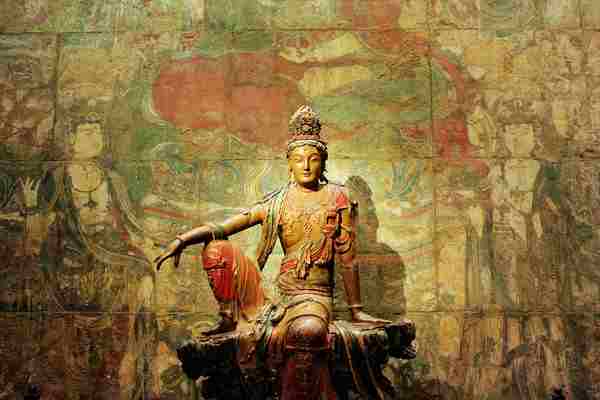In both Buddhism and Taoism, Kuan Yin (pronounced Guan Yin) is the Goddess of compassion, and She is the Japanese Bodhisattva Kanzeon or Kannon.
Kuan Yin’s original name in Sanskrit is Avalokitesvara, which roughly signifies „The Observer of the sights and sounds of the world”. Some Sanskrit scholars say that the Bodhisattva began as the Buddhist God of Mercy, Juichimen. The original statues portray Her as a small and somewhat androgynous male. However, by the late 8th century AD Quan Yin begins to be depicted as a female.
More information:
One legend states that the Bodhisattva began life as a male who later became a female, a She is sometimes described as half male and half female, plus She is also shown as a female. Another legend of the Bodhisattva origin affirms that she was once the very evil Hariti, a mother who sucked 500 demons that she was converted to Buddhism by Gautama Buddha himself.
The Lotus Sutra is commonly accepted to be the earliest literature teaching about the doctrines of Bodhisattva Avalokitesvara. These are found in the Lotus Sutra chapter 25, The Universal Gateway of Avalokitesvara Bodhisattva. This entire chapter is dedicated to Bodhisattva Avalokitesvara (also known as Chenrezig), describing Him as a compassionate Bodhisattva who hears the cries of all sentient beings, and who works tirelessly to help those who call upon his name. Moreover, the Saddharma Pundarika Sutra affirms that Bodhisattva Avalokitesvara had 357 incarnations.
Like Bodhisattva Avalokitesvara, she is also portrayed with a thousand arms and varying numbers of eyes, hands, and heads, sometimes with an eye in the palm of each hand, and is frequently called „thousand arms, thousand-eyes” Bodhisattva. More importantly, in this aspect she represents the omnipresent mother, looking in all directions at the same time, sensing the afflictions of humanity and extending her many arms to pacify them with infinite expressions of her mercy.
Additionally, the Bodhisattva is usually portrayed as riding a mythological animal known as the Hou, which somewhat looks like a Buddhist lion, and symbolizes the divine supremacy exercised by Quan Yin over the powerful forces of nature.
Chanting Quan Yin mantra or Kuan Yin Mantra – Namo Guan Shi Yin Pusa benefits:
By chanting this amazing mantra, we open our hearts, change our vibration and provide love and compassion to those around us. During the mantra meditation practice, a sincere heart is required.








